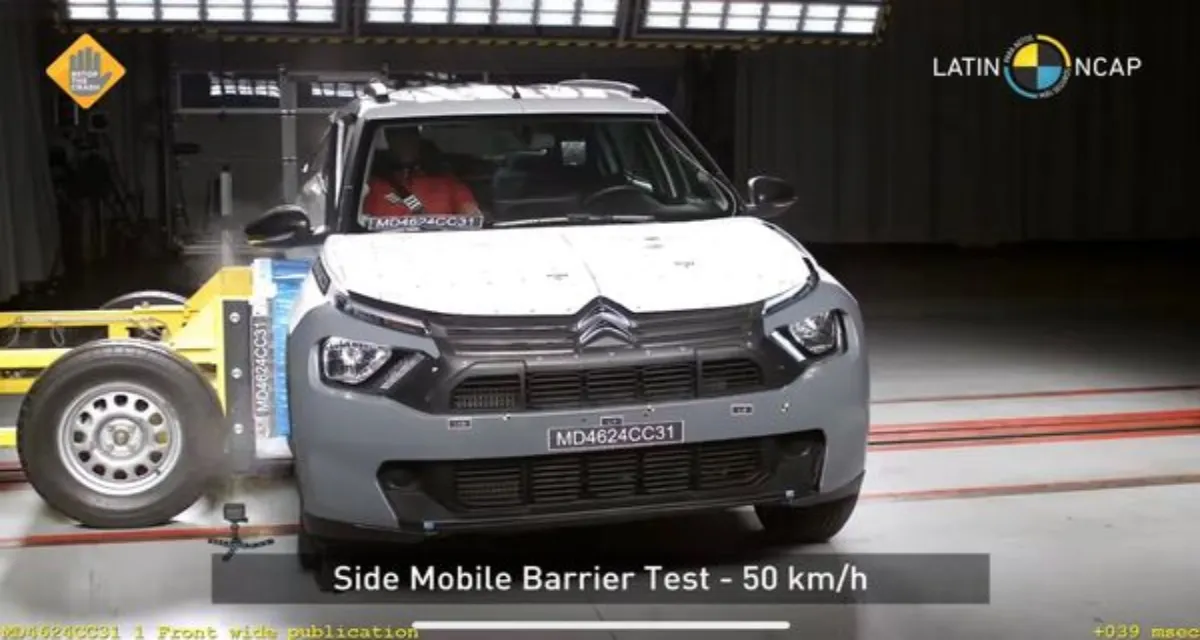

In a shocking revelation, the Citroën C3 Aircross, a compact SUV aimed at emerging markets like India and Latin America, has received a zero-star safety rating in the latest Latin NCAP crash tests.
While this vehicle was marketed for its stylish design and affordability, the dismal safety results have raised serious questions about Citroën’s commitment to passenger safety.
The Latin NCAP tests, known for their rigorous evaluation, painted a grim picture of the Citroën C3 Aircross's safety capabilities. Despite being equipped with basic safety measures like dual airbags and seatbelt reminders, the SUV fell short in critical areas. It failed to protect adult and child passengers effectively during frontal and side-impact collisions.
For adults, while head and neck protection was rated adequate, the chest protection for the driver and front passenger was poor. The unstable footwell area further added to the structural inadequacies, and the lack of knee airbags left drivers exposed to potentially severe injuries.
When it came to child safety, the car's score was marginally better at one star. However, the absence of standard Isofix mounting points and a three-point seatbelt for all seats significantly hampered its ability to safeguard young passengers. Forward-facing child seats in the test failed to adequately restrain a three-year-old dummy during impact, leading to excessive movement.
One of the key criticisms is the absence of advanced safety systems like Electronic Stability Control (ESC), Side and Curtain Airbags, and ISOFIX points. These features are now considered standard in many modern cars, even in budget segments. The lack of these essential components not only reduced the safety score but also limited the car's ability to mitigate severe accidents.
The vehicle's body structure was noted as "stable," which means it could handle additional loads in theory.
However, the lack of side-head protection systems meant that side-pole crash tests could not even be conducted, highlighting serious design oversights.
This zero-star rating is a wake-up call for consumers prioritizing affordability over safety. With growing awareness about vehicle safety in markets like India, many buyers are now scrutinizing crash test results before making a purchase. The Citroën C3 Aircross’s results could push potential buyers to reconsider their options.
Global NCAP and Latin NCAP officials have emphasized the need for manufacturers to improve safety standards, especially in cost-sensitive regions. Alejandro Furas, the Secretary-General of Latin NCAP, criticized Stellantis (Citroën’s parent company) for this performance, calling it a “backward step” compared to its previous safety leadership.
Stellantis, the manufacturer of Citroën, responded to the crash test results by stating that their vehicles comply with local regulations. They further promised to enhance safety measures, including adding more airbags across their range in the Indian market later this year. While this commitment is a step in the right direction, critics argue that these changes should have been proactive rather than reactive.
This incident highlights the persistent gap in safety standards between developed and emerging markets. Many automakers offer subpar versions of their vehicles in these regions, prioritizing cost over comprehensive safety features. This practice not only puts lives at risk but also tarnishes the brand’s reputation globally.
Overall, The Citroën C3 Aircross’s zero-star rating is a sobering reminder of the need for better regulations and consumer vigilance. While the car may appeal to budget-conscious buyers, its poor safety performance is a significant drawback.
If Citroën wants to compete in markets like India and Latin America, it must prioritize the safety of its customers over cost-cutting measures.
As buyers, it’s essential to look beyond a car’s design and price tag. Safety should never be compromised, and understanding crash test results can help make more informed decisions.
For those considering the Citroën C3 Aircross, this crash test serves as a cautionary tale—choose safety over style.
Also Read: